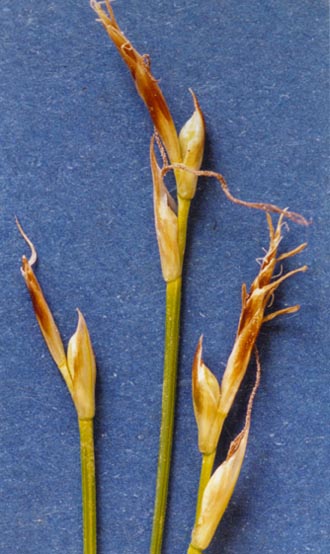Elk Sedge

Common Name(s):
Elk Sedge
Geyer Sedge
Scientific Name:
Carex geyeri F. Boott
Scientific Name Synonyms:
None Known
Symbol:
CAGE2
Description:
Life Span: Perennial
Origin: Native
Season: Cool
Growth Characteristics: Elk sedge is a bunch-like sedge with rhizomes and growing 6-12 inches tall. It reproduces primarily by rhizomes. It flowers June-August. Stems are triangular and pithy.
Seedhead: The seedheads are born at the end of short stems and are solitary, erect spikes with the staminate part (up to 1/8 inch long) above the pistillate part with 1-2 perigynia. Fruits (achenes) are triangular.
Leaves: Leaves are basal and stem-based, 3-ranked, erect, thick and rough on the edges. Lower leaves are often reduced to bladeless sheaths. Blades are narrow , up to 1/8 inch wide.
Ecological Adaptions:
Elk sedge is a widely distributed dryland sedge occurring on a variety of ecological sites at elevations from 6,000-11,000 feet where average annual precipitation is 12-20 inches. It is often prominent on exposed hillsides, but it also grows well in open grasslands and open Ponderosa and lodgepole pine stands as well as more densely forested areas.
Soils: It grows well in well-drained sandy, gravely or rocky soils.
Associated Species: Associated species in Utah include pinegrass (Calamagrostis rubescens), aspen, Ponderosa pine, lodgepole pine, mountain brush species and Douglas fir among others.
Uses and Management:
Wild and domestic animal preference for elk sedge varies seasonally but is generally low. Early growth is more preferred but it becomes less preferred as plants mature. It withstands grazing exceptionally well and is very drought tolerant.

